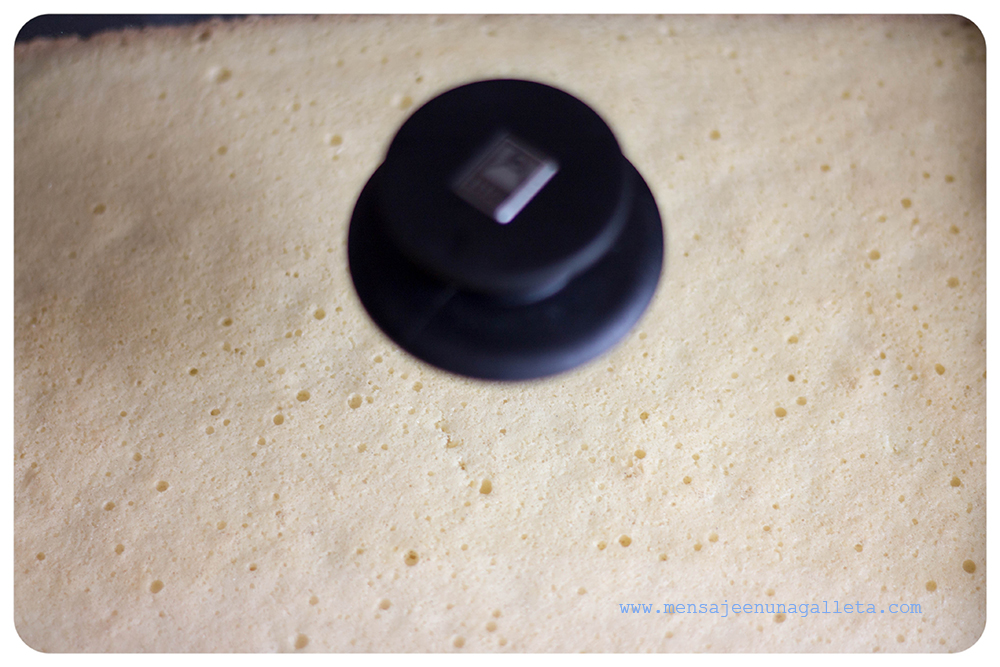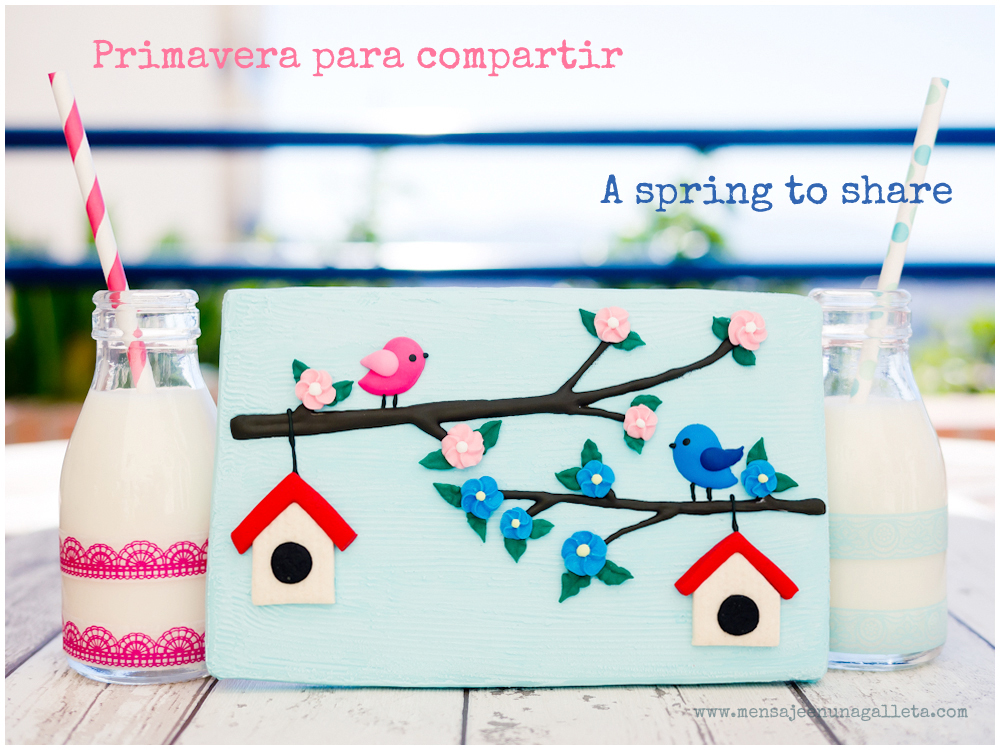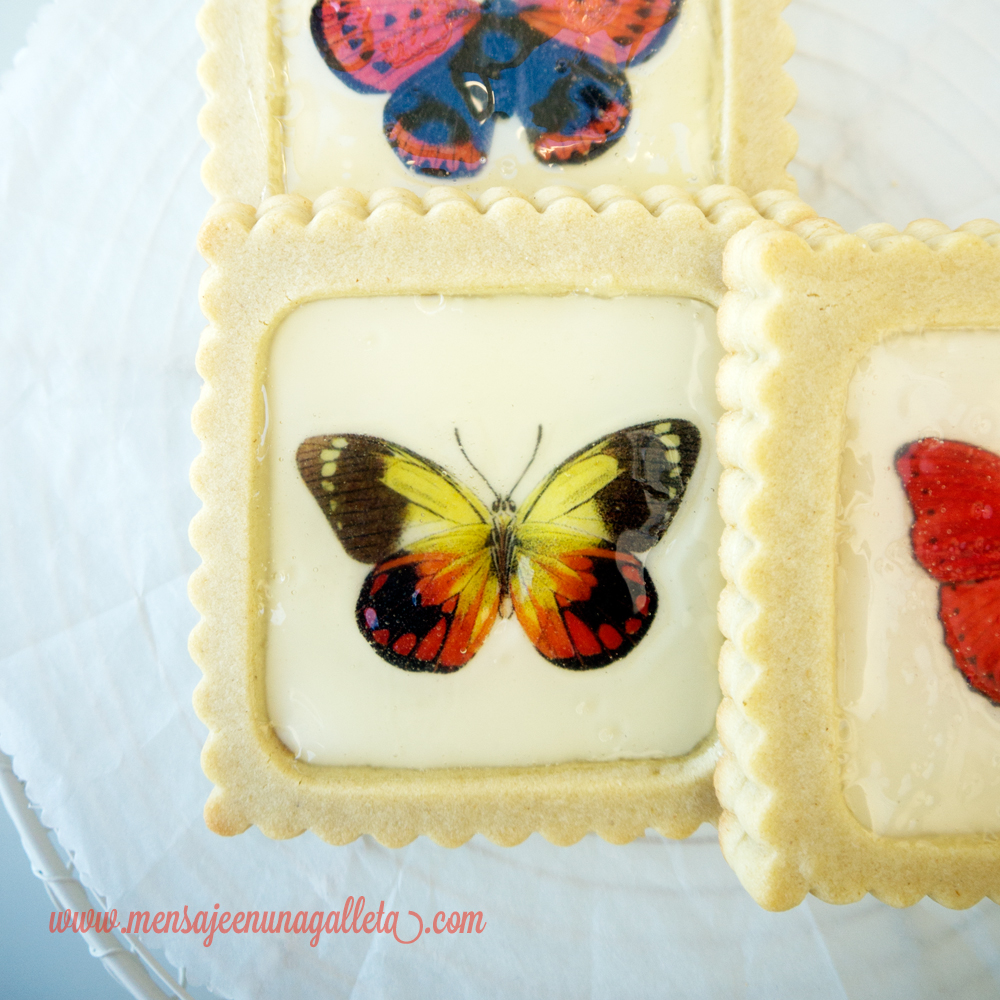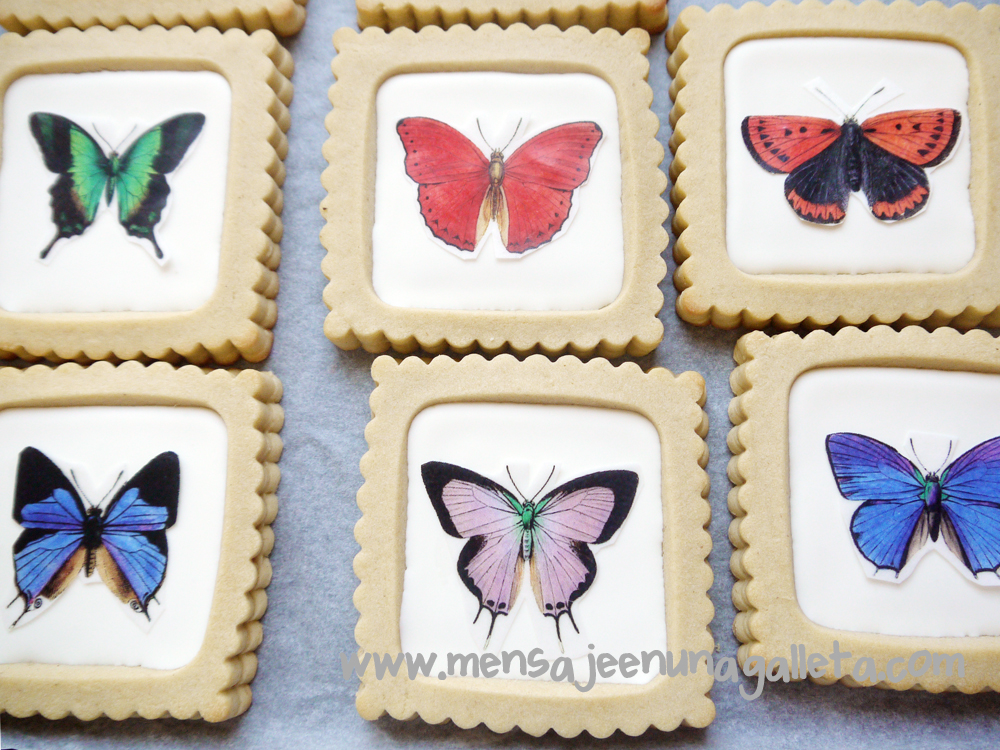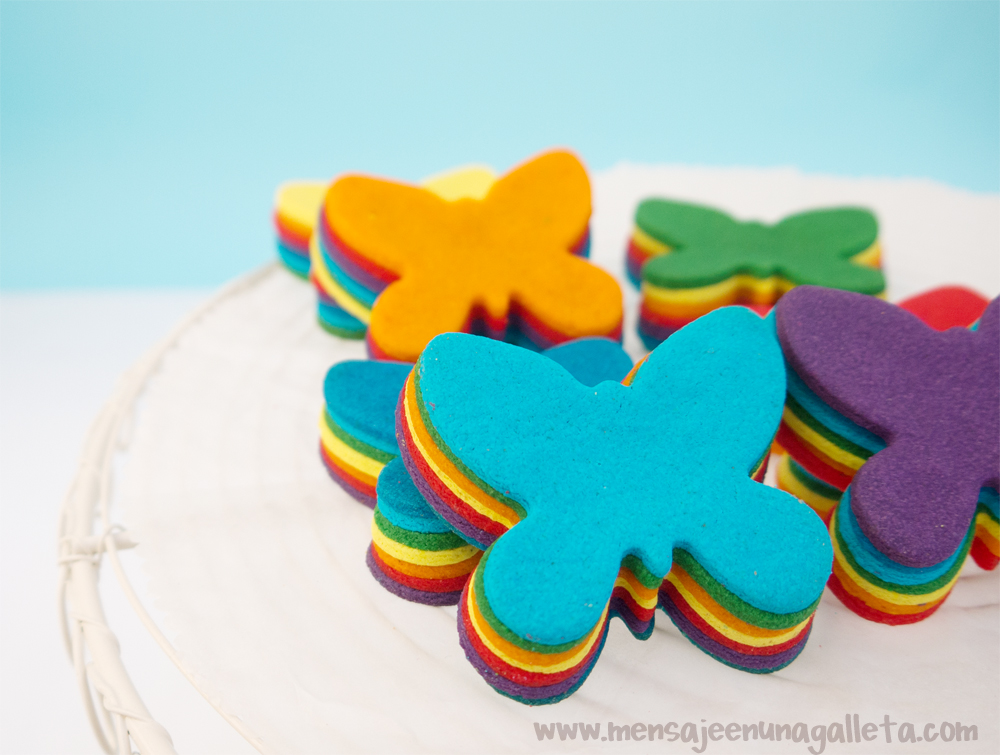Uno de los principales quebraderos de cabeza a la hora de hacer fotos para un blog de cocina, no sólo son las recetas en sí, sino todo el attrezzo o props que salen en la foto. Hace unos días nos compramos unos cortadores de cuchara y Miriam me comentó lo monas que quedarían unas cucharas de colores con esos cortadores. Efectivamente, con los electric colors de Americolor y empleando la técnica del doble horneado y la técnica para conseguir galletas azules, así fue.
One of the main headaches when it comes to photographing food for a blog, it is not just the recipes themselves, but all the attrezzo or props that you can see in the photos. Some days ago we bought some spoon cutters, and Miriam said that some colourful cookies using those cutters would be really cute. And she was right. I made the cookies using the Electric Colours from Americolor, the double baking technique and the steps for making blue cookies.
Vale, ya tenía mis props, ahora faltaba lo más «fácil», la receta. Como en casa tenía muchos huevos, aproveché para hacer un tiramisú, todo un clásico. En lugar de usar bizcochos de soletilla, hice una plancha de bizcocho sin levadura pero que lleva mucho aire incorporado durante la elaboración.
Ok, I already had my props, now ‘the easiest’ part was missing: the recipe. As I had a lot of eggs at home, I prepared a classic dessert, tiramisu. Instead of using ladyfingers, I made a sheet of sponge cake with no baking powder in it but incorporating a lot of air to the batter.
Ingredientes para el «falso» bizcocho
120 gr de azúcar, 120 gr de harina de fuerza, 4 huevos, un pellizco de sal y una cucharadita de vainilla en pasta
Ingredients for the ‘false’ cake
120 grams of sugar, 120 grams of strong flour, 4 eggs, a pinch of salt and a teaspoon of vanilla paste.
Ingredientes para el resto del tiramisú
100 gr de azúcar glas, 5 yemas de huevo, 500 gr de queso mascarpone, nuevamente una cucharadita de vainilla en pasta, café ya enfriado y cacao en polvo para decorar.
Ingredients for the rest of the tiramisu
100 grams of icing sugar, 5 egg yolks, 500 grams of mascarpone cheese, another teaspoon of vanilla paste, some cooled coffee and cocoa powder for decorating.
Vayamos con la preparación del bizcocho.
Introducimos la harina y batimos a velocidad 6 durante 1 minuto para tamizarla y la reservamos. Ponemos los huevos y el azúcar en el vaso, acoplamos la mariposa, seleccionamos temperatura 37 grados y, durante 5 minutos, batimos a velocidad 3 y medio. Paramos la máquina, quitamos la temperatura y batimos otros 5 minutos a la misma velocidad.
Let’s go for the cake elaboration.
We put the flour in the Thermomix bowl and mix on speed 6 for 1 minute to sift. Set aside. We put the eggs and the sugar in the bowl, attach the butterfly, select 37º, and mix on speed 3.5 for 5 minutes. We turn the robot off, no temperature, and mix for another 5 minutes using the same speed.
A continuación, echamos la mezcla en un bol y añadimos la harina poco a poco, mezclando con una espátula suavemente para no eliminar las burbujas de aire que contiene la mezcla. Ponemos un papel de horno encima de una bandeja con tapa, como ésta de Bra, y vertemos ahí la mezcla.
Then we put that mixture in a bowl and start adding the flour little by little, stirring very softly with a spatula trying not to eliminate the air bubbles of the batter. We cover a lidded tray like this one from Bra with parchment paper and pour the batter in it.
La altura del bizcocho es de un cm de grosor aproximadamente. Horneamos durante 25 minutos a 180 grados
The cake height is approximately 1 cm. We bake it at 180ºC for 25 minutes
En este punto, podemos cortar varios rectángulos de bizcocho o bien, usar un cortador circular del tamaño de unos vasos bajos que tengamos para montar las capas. Si usáis el cortador, podréis comprobar cómo se oye un ssssshhhhhhhhh cuando lo apretéis contra el bizcocho.
This is the moment when we can either cut several cake rectangles or use a round cutter, the size of a rock glass, to arrange the layers. If you use the cutter, you will hear a kind of sssssshhhhhh when you press it against the cake.
Vamos ahora con la elaboración de la parte cremosa.
Batimos las 5 yemas con el azúcar y la vainilla a velocidad 3 y medio con la mariposa de nuevo durante 3 minutos. Incorporamos el queso y batimos a la misma velocidad durante 2 minutos y ni un minuto más porque si batimos en exceso, el queso pierde toda su cremosidad y pasa a ser completamente líquido.
Now, the elaboration of the creamy part.
We whisk the 5 egg yolks with the sugar and vanilla on speed 3.5, butterfly attached, for 3 minutes. Add the cheese and whisk on same speed for 2 minutes, not a second more, because if we over mix, the cheese will lose all its creaminess and will be completely liquid.
Llegamos al montaje.
En el recipiente que hayamos seleccionado, ponemos una capa de bizcocho, vertemos un poco de café sobre él hasta que se empape y después ponemos una capa de crema. Seguimos sucesivamente hasta terminar en una capa de crema que espolvorearemos con cacao, adornamos con nuestras preciosísimas cucharas y damos por finalizada la receta.
Assembling the dessert
In the glass/bowl we have selected, we put a cake layer, pour a little bit of coffee on it until it is soaked and then add a cream layer. We repeat the process until we finish with a cream layer that we will dust with cocoa powder. Decorate using our precious spoons and the recipe is done.
Por cierto, hice también algunas cucharas de chocolate que no sé si van a llegar para la próxima sesión de fotos 😉
By the way, I also made some chocolate spoons which I doubt will survive the next photo shoot 😉
Un beso/Love
Estíbaliz
PS: Once again, thank you Gloria!



